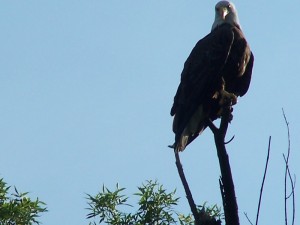 Celeron, a French officer, explored the Conewango Creek in 1749 leaving lead plates claiming the area for France. The plates have never been found.
Celeron, a French officer, explored the Conewango Creek in 1749 leaving lead plates claiming the area for France. The plates have never been found.- Store house run, directly across from our livery, was named by General George Washington’s troops. They left provisions at this location as they started their over land trek to negotiate with Chief Cornplanter.
- The Conewango became a river highway. Huge pine trees were cut down, turned into lumber rafts, and floated to the village of Pittsburg The Captain and crew could make up to seven dollars each! After selling the lumber, they would then walk back to Russell.
- Keel boats arrived, which were pushed up stream by boatmen using long poles. The trip from Warren to Lake Chautauqua would take two weeks. The crew were a tough breed of man, called have man have alligator, not ones to be trifled with if you valued your life.
- Flatboats came next, built on the Conewango the boats would be outfitted with provisions, a floating store. They would float south selling their wears along the way to New Orleans.
- The first covered bridge across the Conewango was built in Akeley about 1 mile south of the livery (1846)
- The Big 4 road that runs parallel to the Conewango below Russell was made and named by 4 local business men (1878)
- 1826 Stage Coach begins operations, most travelers came to see the Spiritualist Springs in Kiantone
- 1870 Railroad comes to Russell, Called the Dolly Varden it followed the Conewango , the old rail bed is still there today.
- 1905 Trolley now takes people and baggage From Warren to Jamestown, round trip was 75 cents , with 53 stops along the way!
Conewango Kayak Canoe Rentals, LLC
PA River of the Year 2015
